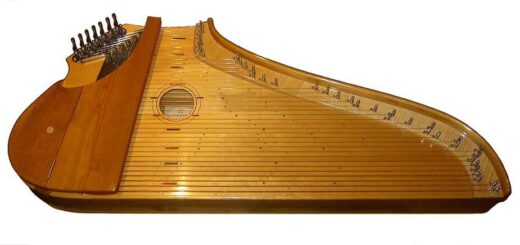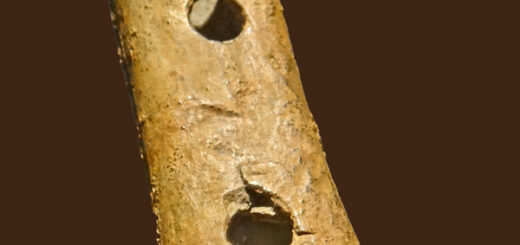Slit Drum – The Voice of the Forest
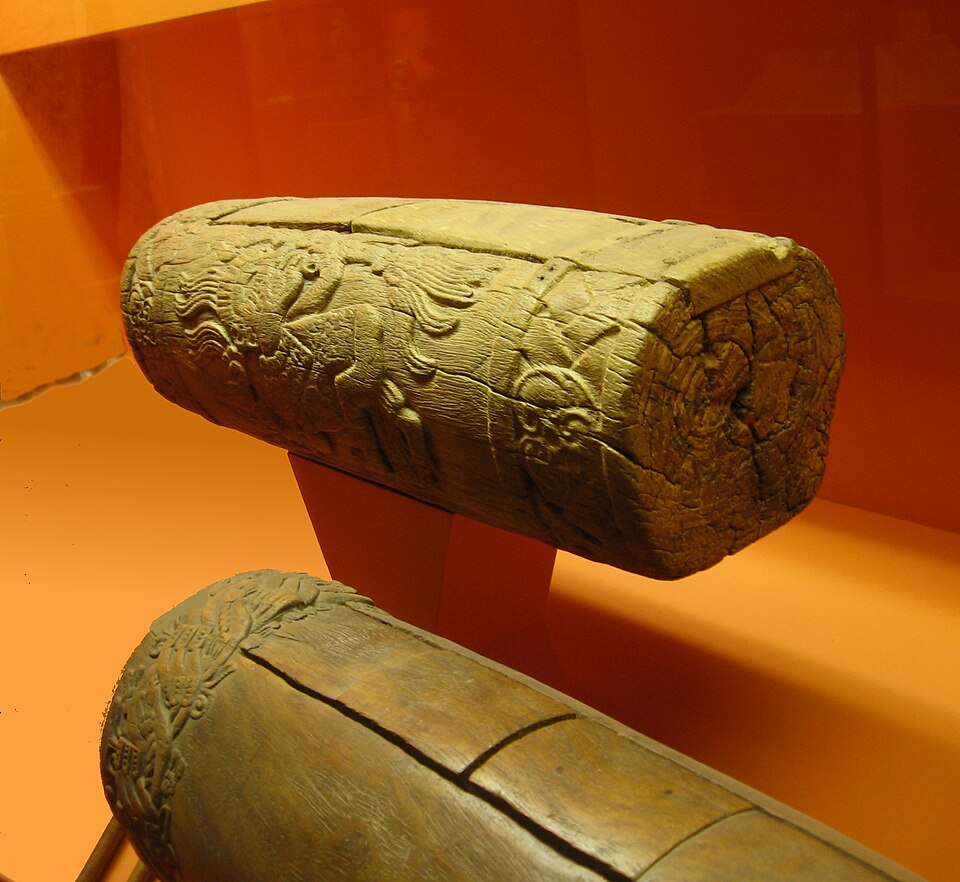
In a world overflowing with digital sound and synthetic beats, there’s something grounding and magical about the organic rhythm of traditional instruments. One such instrument is the slit drum, a simple yet deeply resonant piece of musical heritage that spans continents, cultures and centuries.
What Is a Slit Drum?
Despite its name, the slit drum isn’t actually a drum in the traditional sense. It’s a type of idiophone, an instrument that produces sound through the vibration of its body, rather than strings or stretched membranes. A slit drum is typically made from a hollowed log or wooden box with one or more slits cut into the top. These slits can be shaped in various ways, often resembling an “H” or a series of parallel lines.
When struck with a mallet or stick, the tongues of wood between the slits vibrate, producing rich, warm tones that can carry over long distances.

Bamileke drummers in Cameroon’s West Province. Creative Commons | Author: Tatoute – Source: https://commons.wikimedia.org/wiki/File:TamTam.jpg
A Global Instrument with Local Flavors
Slit drums are found all over the world, often serving both musical and communicative functions. Each culture brings its own design, tuning, and traditions to the instrument.
- Africa: In Central and West Africa, slit drums—sometimes called talking drums—have been used to send messages between villages. Skilled drummers could mimic the tones and rhythms of spoken language to convey complex information.
- Asia: In countries like Vietnam and the Philippines, slit drums were traditionally used in rituals and religious ceremonies. Some variations, like the tongue drum, have found modern adaptations in meditative and therapeutic music.
- Oceania: In Papua New Guinea and Vanuatu, slit drums are carved with elaborate designs and can be over six feet tall. These towering instruments are sacred and often represent ancestral spirits.
- The Americas: Indigenous groups throughout Central and South America have used slit drums in festivals, ceremonies, and community events for centuries.
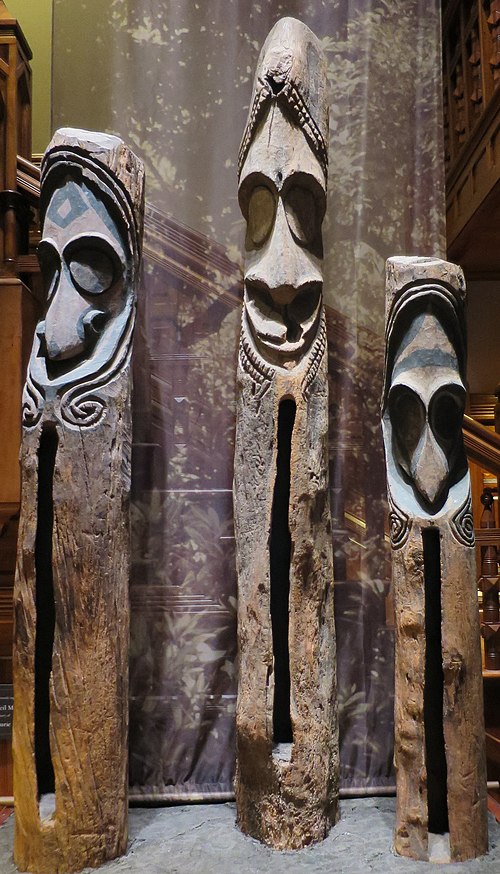
Wooden slit drums from Vanuatu (Bernice P. Bishop Museum) Creative Commons | Author: Wmpearl – Source: https://commons.wikimedia.org/wiki/File:Wooden_slit_drums_from_Vanuatu,_Bernice_P._Bishop_Museum.JPG
More Than Just an Instrument
Slit drums have always been more than just tools for making music. In many cultures, they hold spiritual or social significance. They can be symbols of power, objects of reverence, or instruments of storytelling.
In some traditions, only certain people, like shamans, elders, or chiefs—are allowed to play the slit drum. The sounds produced are not just rhythms; they are voices of ancestors, calls to the divine, or messages to the living.
Modern Revival and Fusion
Today, the slit drum continues to evolve. Contemporary musicians have adapted its design, adding metal tongues or tuning systems to expand its melodic possibilities. You might find it in a yoga studio, a film score, or a fusion band blending tribal beats with electronic sounds.
Craftsmen around the world are reviving the art of slit drum making, using both traditional techniques and modern innovations. The instrument’s earthy resonance and minimalist elegance are gaining new fans in a world hungry for authenticity.
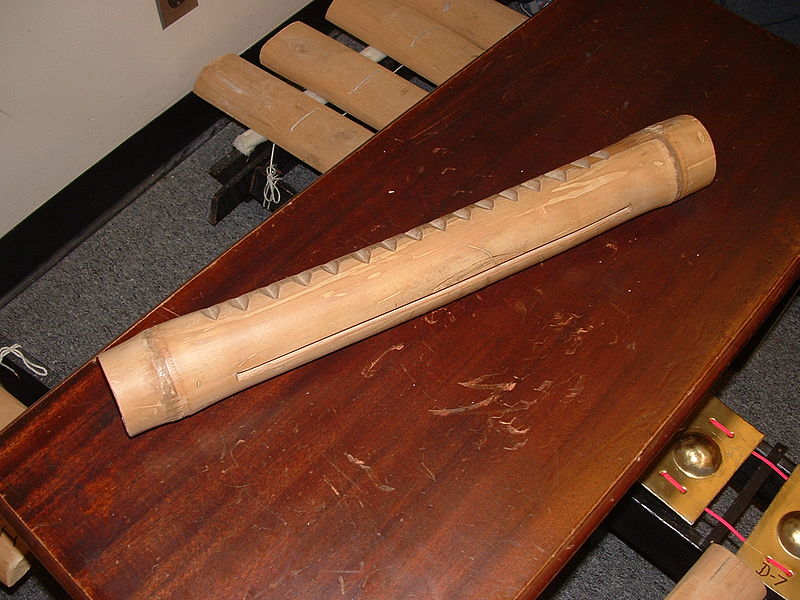
This is a Philippine bamboo scraper gong/slit drum of the Maguindanaon with a jagged edge on one side. This instrument in particular is used by Master Danongan Kalanduyan at San Francisco State to teach his kulintang class. © Creative Commons | Author: Philip Dominguez Mercurio PhilipDM
Why It Matters
Instruments like the slit drum remind us that music is more than entertainment. It’s communication, connection, culture. It’s a reminder that something as simple as a hollowed piece of wood can carry the heartbeat of a people, the echo of a forest, and the whisper of history.
Whether you’re a musician, a cultural explorer, or just someone who loves learning about the world’s hidden treasures, the slit drum offers a fascinating glimpse into the shared rhythm of humanity.
References:
https://en.wikipedia.org/wiki/Slit_drum

